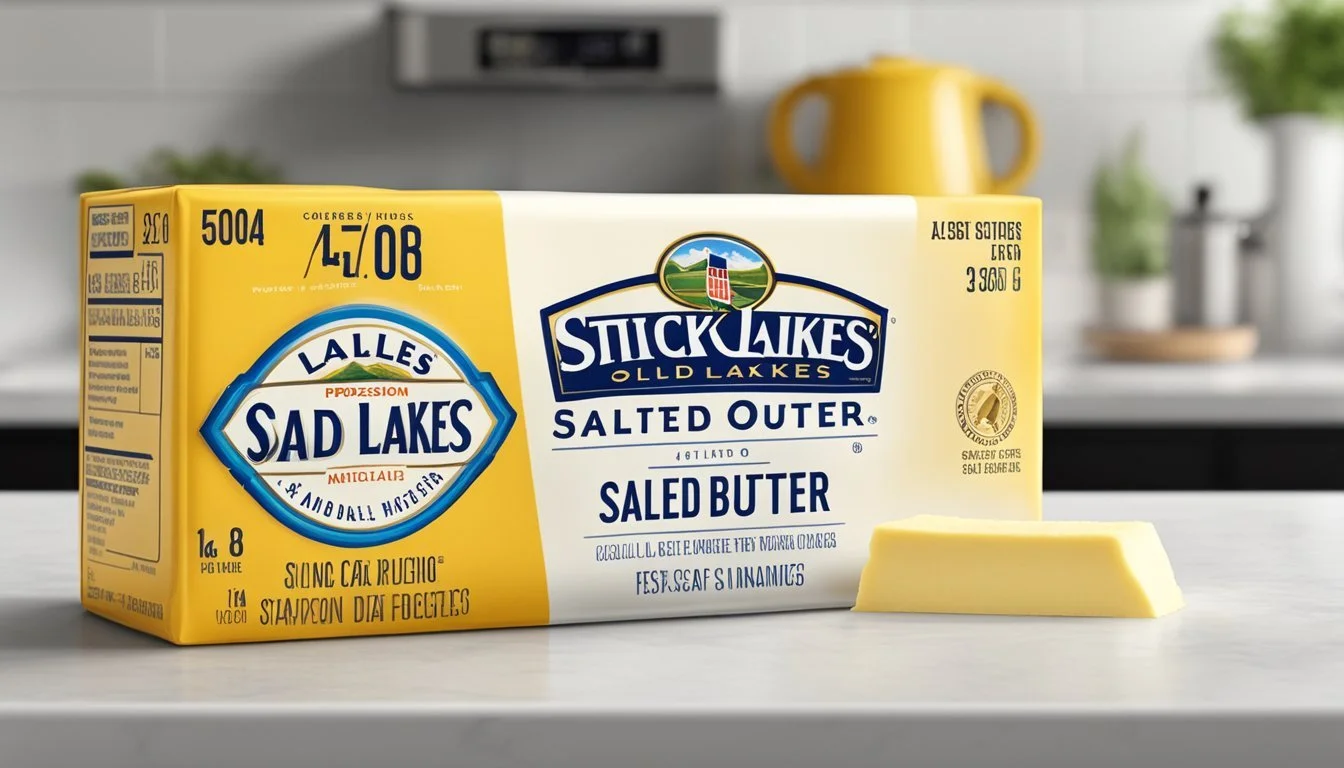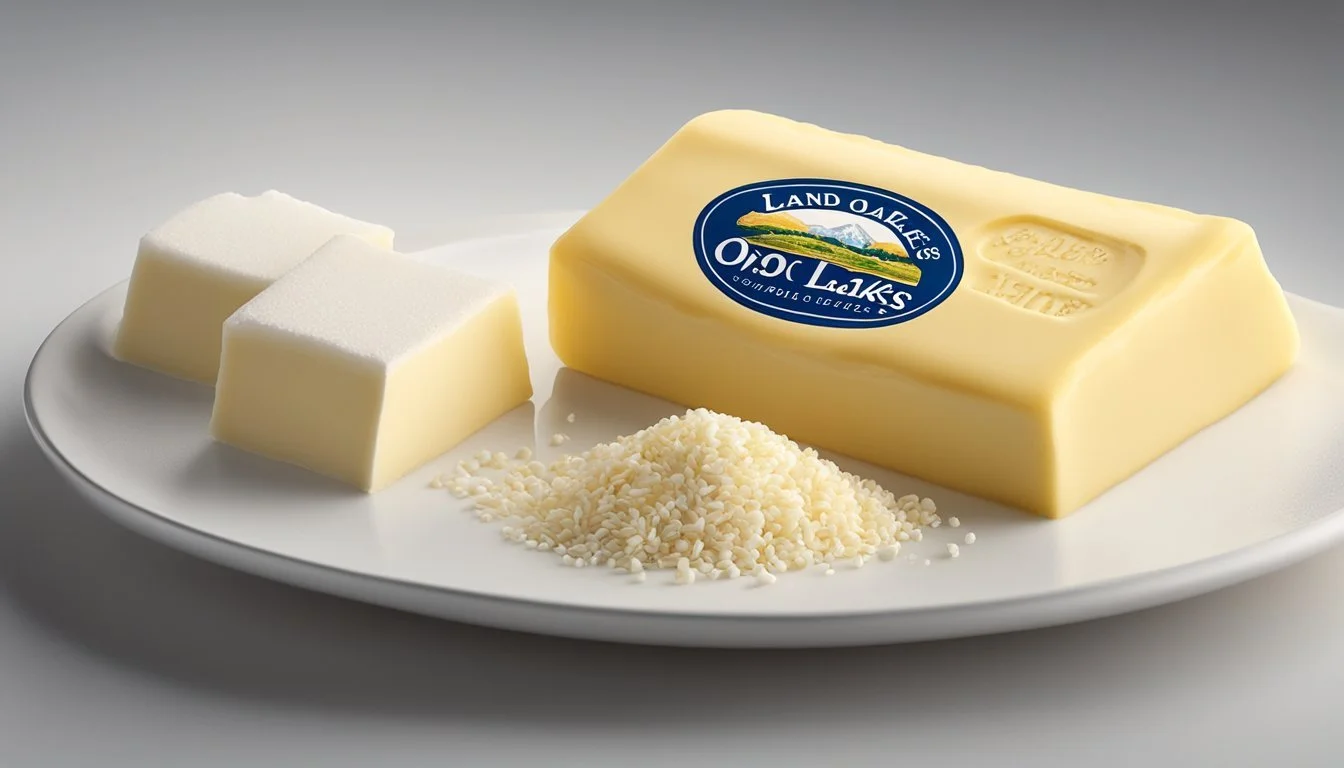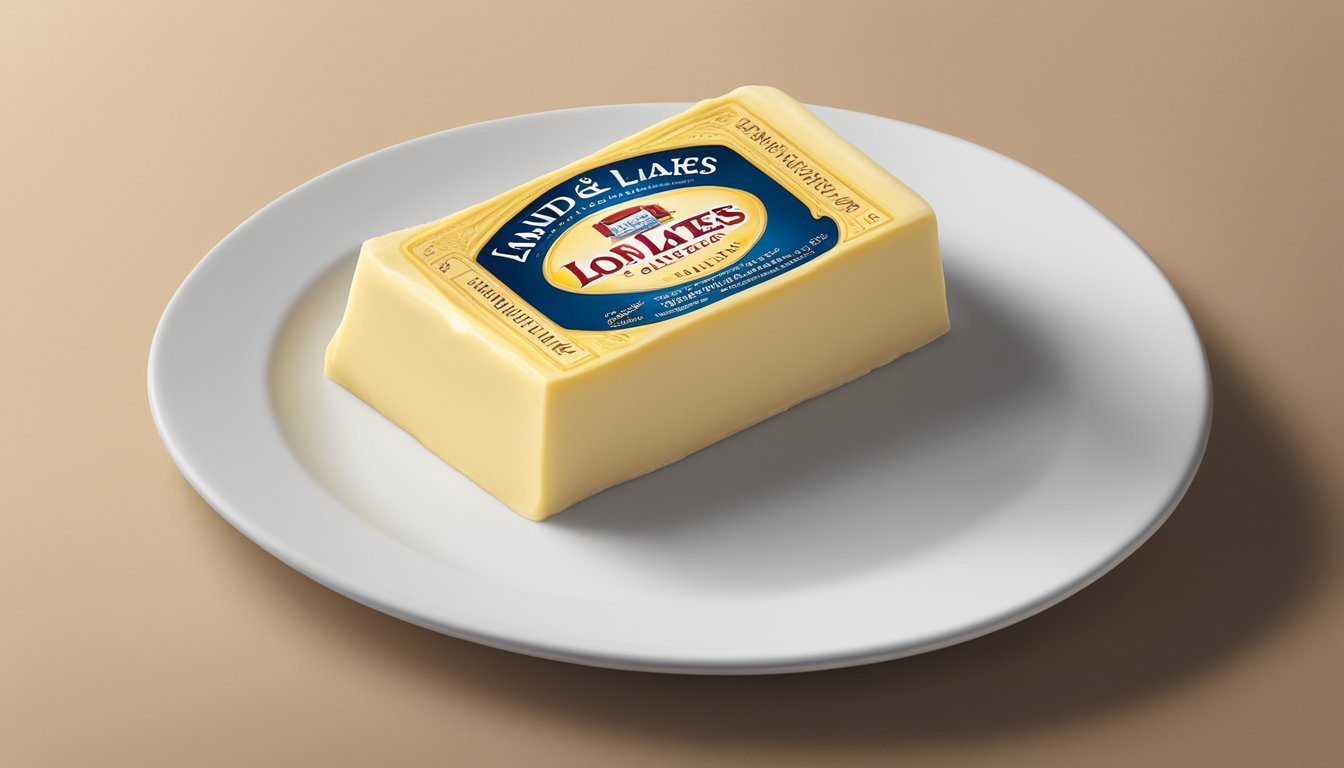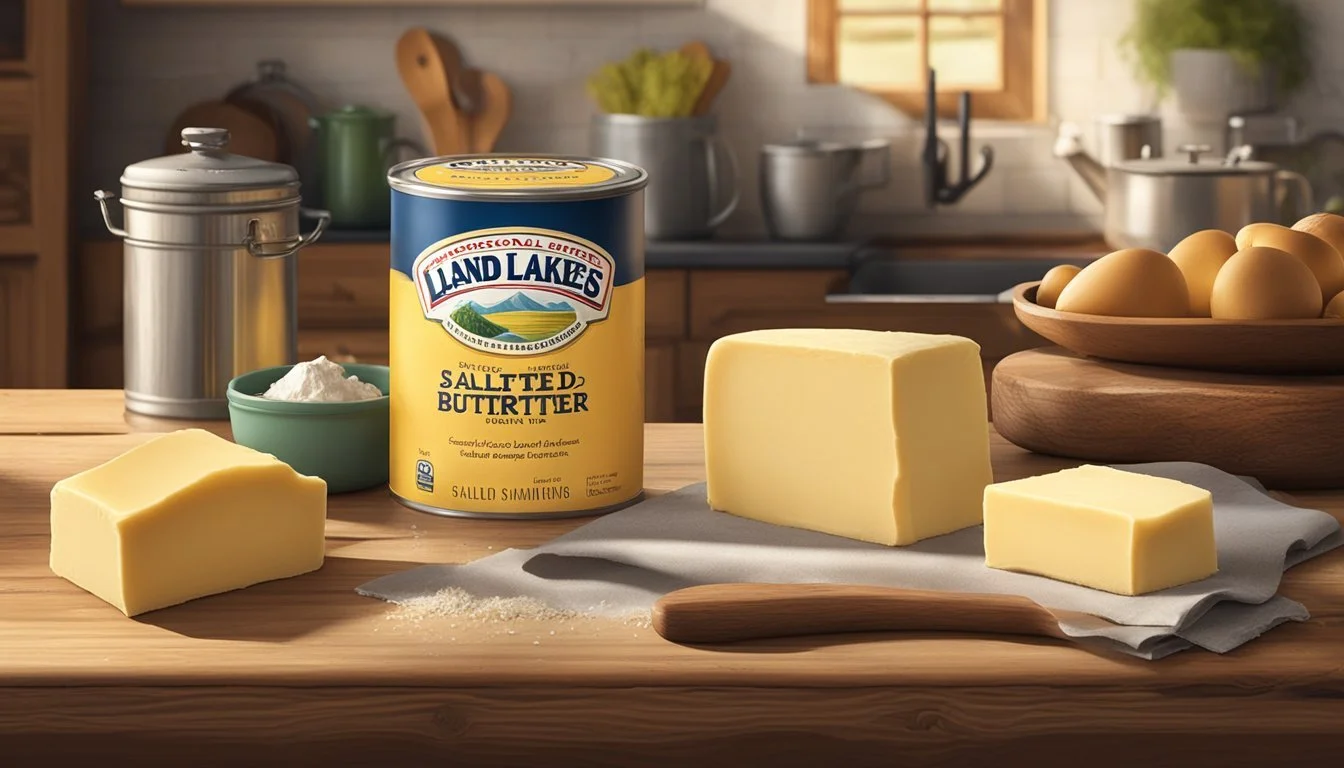How Long Does Land O'Lakes Salted Butter Last?
Unveiling Shelf Life Secrets
Land O'Lakes salted butter (how long does butter last?) is a dairy product that combines cream and salt, offering a balance between taste, versatility, and shelf life. As a staple in many kitchens, understanding its longevity is crucial for both culinary quality and food safety. Salt, a natural preservative found in salted butter, extends its shelf life compared to its unsalted counterpart. The shelf life of Land O'Lakes salted butter is influenced by various storage conditions, and when stored properly, it maintains its quality for a considerable period before showing signs of spoilage.
Once opened and removed from its original Flavor Protect® Wrapper, Land O'Lakes recommends that the butter should be kept in the refrigerator. This storage method helps preserve its freshness, ensuring that the butter remains safe and flavorful for consumption. Keeping it in a covered butter dish or re-wrapping it in foil or plastic can prevent it from absorbing odors and flavors from other foods in the refrigerator. To experience the best quality, it's advisable to use the butter by the best-by or use-by date, which usually provides a buffer beyond the printed date when refrigerated. However, for those who prefer to soften the butter for immediate use, it can be taken out of the refrigerator for a short period to achieve the desired consistency.
In households where butter is used frequently, some may opt to store salted butter at room temperature for ease of spreading. While Land O'Lakes does not offer specific guidelines for room temperature storage and typically recommends refrigeration, it's generally recognized that salted butter’s low moisture content and added salt can help it stay fresh even at room temperature for a limited time. However, this practice should be approached with caution, considering that room temperature and ambient conditions can vary greatly, potentially affecting the butter's longevity outside of refrigeration.
Understanding Butter Composition
Butter's primary components are butterfat, milk solids, and water. The addition of salt distinguishes salted from unsalted varieties, affecting both shelf life and flavor.
Butterfat, Milk, and Salt Content
Butterfat is the key component of butter, typically comprising about 80% of its total content. The remainder of butter consists of water and milk solids, which include proteins and carbohydrates. Salt is added to certain types of butter, acting as a preservative to extend shelf life and as a flavor enhancer.
Land O'Lakes salted butter contains both butterfat and salt which contribute to its overall quality and taste. The presence of salt in butter not only serves to heighten its flavor but also plays a role in its preservation, helping to maintain its freshness over an extended period when refrigerated.
Differences Between Salted and Unsalted Butter
Salted Butter:
Has salt added, generally around 1.5 to 2 percent of its total weight.
Offers a longer shelf life due to salt's preservative effects.
Enhances flavor, making it a preferred choice for spreading on bread and cooking.
Unsalted Butter:
Contains no added salt, presenting the true flavor of the butterfat.
Is preferred in baking when control over salt content is important.
Typically has a shorter shelf life than its salted counterpart.
While salted butter can be kept for a long duration due to the preservative nature of salt, unsalted butter is chosen for its pure taste and is a staple in recipes where control over the overall flavor profile is essential. In both cases, proper storage is crucial, and Land O'Lakes recommends keeping their butter refrigerated and sealed to maintain quality.
Storage Conditions Impact on Butter
The longevity and quality of Land O'Lakes salted butter are significantly influenced by storage conditions. Key factors include temperature control, protection from air and light, and appropriate moisture levels.
Effects of Temperature
Storing Land O'Lakes butter at the correct temperature is crucial to maintain its freshness and prevent bacterial growth. In the refrigerator, butter should remain at temperatures between 32°F (0°C) and 40°F (4°C) to keep it from going rancid. At room temperature, butter should not be left out for more than four hours, as warmer conditions can accelerate spoilage and lead to the growth of harmful bacteria.
Influence of Air, Light, and Moisture
Exposure to air, light, and moisture can degrade Land O'Lakes butter, affecting both flavor and texture. To minimize this:
Air: Seal butter properly to prevent oxidation, which can turn butter rancid.
Light: Store butter in a dark place or in an opaque container to protect it from light that can decompose its structure.
Moisture: Keep butter dry to thwart the growth of mold. A covered butter dish when left on the counter or an airtight container in the fridge is effective.
Ideal Storage Solutions
The best practices for storing Land O'Lakes butter:
Refrigerator: Use the original packaging or an airtight container for unopened butter; a butter dish with a lid for opened butter.
Freezer: For long-term storage, freeze in its original packaging wrapped in aluminum foil or a freezer bag to prevent freezer burn.
Thawing: Thaw only the needed amount of butter in the fridge and never refreeze thawed butter.
Proper storage conditions help maintain the quality and extend the shelf life of Land O'Lakes butter. Using the right storage method ensures that the butter keeps its desired taste and texture until ready for use.
Butter Longevity
Understanding how to gauge the shelf life of salted butter and recognizing when it has gone bad are vital for maintaining the quality and safety of your food. Proper storage techniques can significantly extend the usability of butter, ensuring its performance in culinary applications.
Typical Shelf Life of Salted Butter
Salted butter generally has a longer shelf life compared to unsalted butter due to the preservative effect of salt. Typically, Land O'Lakes salted butter has a shelf life of:
Unopened: Up to the Best By Date when stored in the refrigerator, usually several months.
Opened: Approximately 3-4 weeks in the refrigerator, as long as it’s kept in an airtight container or its original packaging.
The USDA and FDA don’t specify exact expiration dates for butter, so the Best By Date is a quality indicator rather than a sharp safety deadline.
Signs of Spoilage and Rancidity
Butter that is no longer suitable for consumption may exhibit several telltale signs of spoilage:
Odor: Sour or cheesy smell indicates that the butter is rancid.
Taste: A bitter taste is a clear sign that butter should not be consumed.
Texture: A greasy or grainy texture, inconsistent with normal creaminess.
Appearance: Discoloration or presence of mold.
Always inspect the butter before use, especially if it's nearing or has passed the Best By Date.
Extending Butter's Usability
To maximize the usability period of butter, adhere to these storage guidelines:
Refrigeration: Keep it wrapped in its original packaging or a covered dish.
Freezing: Freeze butter to extend its life for up to 6-12 months.
Storage Method Expected Shelf Life Refrigerator (opened/unopened) Up to 4 weeks past Best By Date Freezer (opened/unopened) 6-12 months
The performance of butter in baking and cooking is best when it's properly stored and fresh. Utilizing these practices ensures butter retains its intended flavor and function.
Practical Tips for Butter Usage
In the kitchen, Land O'Lakes salted butter can be a versatile ally, but it requires careful handling to maintain its quality and safety. From prepping it for culinary use to extending its shelf life, these tips will help ensure the butter enhances your recipes while being used effectively.
Preparation for Cooking and Baking
To achieve the best texture in baking, one must often soften butter to room temperature. The ideal way to do this is by placing the butter out on the countertop 30-60 minutes before starting the recipe. However, for swift softening, slice the butter into smaller pieces to reduce the softening time. Avoid using a microwave as it can unevenly soften and potentially melt the butter, which might affect the structure of your baked goods.
Maintaining Freshness and Flavor
To preserve freshness and flavor, store Land O'Lakes butter in the refrigerator either in its original wrapping or within a butter dish with a cover to protect it from absorbing other food odors. For extended storage, one may freeze butter in a freezer bag to prevent freezer burn. Salted butter has a slightly longer shelf life than unsalted due to its salt content; however, it's advisable to use butter within the use-by date and inspect for freshness periodically.
Safety Considerations
Butter should always be stored in a way that minimizes the risk of contamination and bacterial growth. One should use a clean utensil every time butter is spread to prevent introducing crumbs or other food particles. To avoid the risk of foodborne illness, do not leave butter at room temperature for more than a few hours and ensure any leftover softened butter is refrigerated promptly. It's critical to maintain food safety by discarding any butter with signs of spoilage, such as an off odor, discoloration, or mold.
Frequently Asked Questions
In this section, readers will find specific information addressing common concerns about the storage, usage, and alternatives to Land O'Lakes butter.
Storing Homemade Versus Store-Bought Butter
When storing butter, it's vital to differentiate between homemade and store-bought butter like Land O'Lakes. Homemade butter, often made from raw, unpasteurized cream, lacks the preservatives found in commercial butter and therefore has a shorter shelf life. It should be consumed within a week and kept in the refrigerator, whereas Land O'Lakes Butter, which is pasteurized, can last several weeks to months if stored properly in its original packaging or a butter keeper to protect its flavor.
Using Expired Butter
The safety of using expired butter depends on whether it has gone rancid. If Land O'Lakes Butter has been stored in the refrigerator and is slightly past its expiration date, perform a sniff test: rancid butter will have an off smell. For safety and quality, discard butter if it displays any signs of spoilage. Using mildly expired butter for cooking might be acceptable, but it is not recommended especially if it's meant to be consumed raw or if it has a noticeably altered taste.
Alternatives to Land O'Lakes Butter
Consumers seeking alternatives to Land O'Lakes Butter have several options, including other brands of salted and unsalted butter, or dairy-free products such as margarine and Land O Lakes® Butter with Canola Oil. While taste and texture may vary, these substitutes often perform similarly in recipes. One can also use a butter crock or butter keeper for extended room temperature storage while maintaining spreadability and freshness, which is helpful if using butter daily. For long-term storage beyond the pantry or fridge, consumers can also freeze butter to extend its shelf life up to a year.
The Legacy of Land O'Lakes Butter
Land O'Lakes has established a reputation for commitment to quality and has played a significant role in the dairy industry.
Brand's Commitment to Quality
Land O'Lakes is synonymous with premium dairy products, and its butter is no exception. They place a high emphasis on quality and freshness, from the selection of the finest creams to the meticulous manufacturing processes that underpin their iconic butter. It is this strict adherence to quality that ensures each stick of Land O'Lakes butter delivers the rich, sweet cream taste consumers expect.
Contribution to Dairy Industry
Land O'Lakes has not only been a household name but also a significant contributor to the dairy industry. Their approach to quality dairy production has set standards within the sector, often leading initiatives to improve dairy practices across the industry. The company's production is not just about butter; it also includes other dairy products such as buttermilk and cream, all of which benefit from their stringent focus on extracting the best from each cow's contribution.
Beyond the Butter Dish: Creative Uses
While Land O'Lakes butter is traditionally used for spreading on bread and baking, there are numerous creative applications that can enhance flavor and add nutritional value to a variety of dishes.
Butter in Various Recipes
Land O'Lakes salted butter serves as a versatile base ingredient in an array of recipes. For baking, its creamy texture ensures moist and tender cakes, while its high fat content creates flaky pastries and pie crusts. In cooking, a pat of butter can finish sauces with a glossy sheen and rich taste. It also elevates sautéed vegetables and pan-seared meats with a depth of flavor and enticing aroma.
DIY Butter Mixes and Spreads
Consumers can craft homemade butter mixes by incorporating herbs, spices, or sweeteners into softened Land O'Lakes butter. Examples include Garlic Herb Butter or Cinnamon Honey Butter, which can be used to add complexity to dishes or as flavorful spreads. Homemade mixes can be refrigerated or frozen in individual portions for convenience.
Garlic Herb Butter:
Mix softened butter with minced garlic, chopped parsley, and a pinch of salt.
Cinnamon Honey Butter:
Combine softened butter with honey, ground cinnamon, and a touch of vanilla extract.
Butter's Role in Nutrition and Diet
In moderation, Land O'Lakes salted butter can play a part in one's nutritional intake. It contains fat-soluble vitamins and healthy fats crucial for a balanced diet. Dietitians often highlight the value of including a variety of fats in the diet, which includes saturated fats like those found in butter, for maintaining optimal health. It's important for consumers to consider the balance of unsaturated and saturated fats, as well as their overall dietary needs when integrating butter into their meals.









